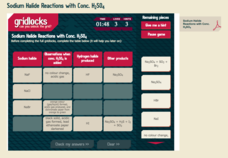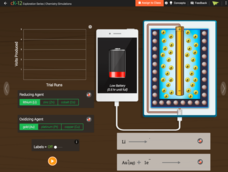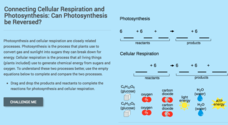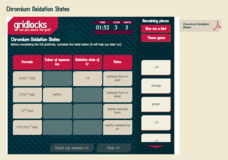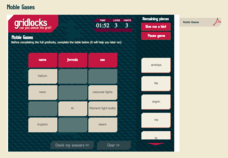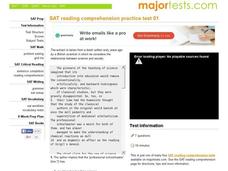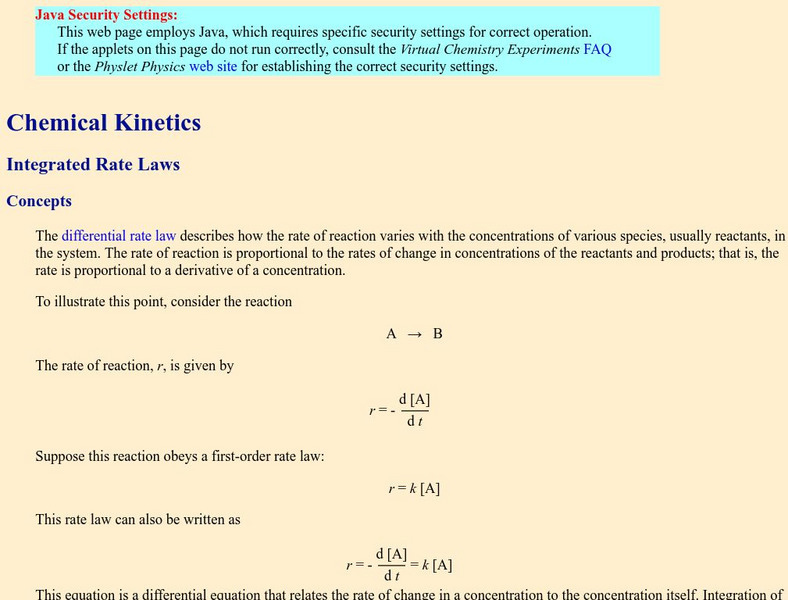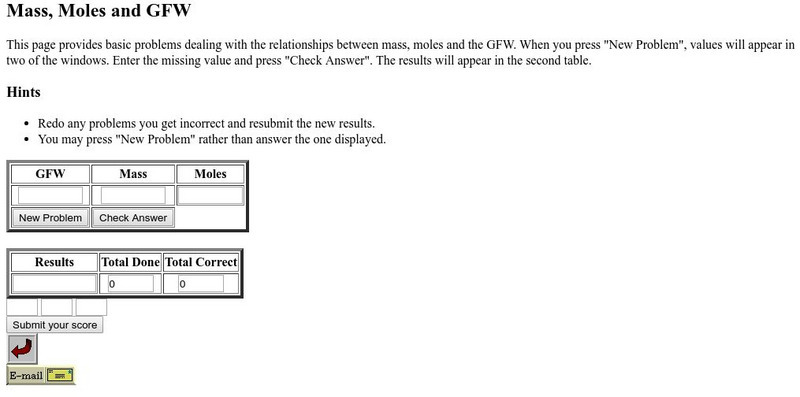CK-12 Foundation
Balancing Equations
Make the microscopic world of chemical reactions come to life. An engaging video demonstrates a methane-oxygen reaction. Learners see the reaction take place and observe the chemical equation being balanced.
Royal Society of Chemistry
Sodium Halide Reactions with Conc. H2SO4
What do you get when you combine precipitate reactions with puzzles? Maximize the engagement in a single replacement reactions lesson by incorporating fun puzzles. Chemistry scholars observe the reaction between several sodium halides...
CK-12 Foundation
Battery
Don't take for granted the technology behind power packs. Build an understanding of the chemical mechanics of a battery pack that charges your phone. The simulation allows young scientists to manipulate the type of elements in a pack and...
Concord Consortium
Stoichiometry and Balancing Equations
Is your stoichiometry lesson plan just not adding up? Incorporate an exciting interactive to balance things out! Chemistry scholars manipulate the number of molecules added to the reaction vessel, then observe as bonds form and break as...
CK-12 Foundation
Crash
Explore the chemistry behind the airbags that keep you safe in a collision. Using a simulation, your classes find the best gas to use to inflate an airbag. The simulation shows the time it takes to inflate to a maximum volume....
CK-12 Foundation
Hotpack - Coldpack
Chemistry can help athletes and others protect and treat injuries. Use the interactive activity to explore the chemical reactions in instant hot and coldpacks. Learners manipulate the type of salt in the pack and watch the reaction take...
CK-12 Foundation
Cellular Respiration: Can Photosynthesis Be Reversed?
Cellular respiration and photosynthesis relate closely, but many don't realize how. Scholars drag and drop the reactants and products to the chemical reactions for both processes. Then they answer three multiple-choice questions.
Royal Society of Chemistry
Alkalis and Salts
Gamification is an educational sensation! Young scientists build their acid-base vocabulary skills through a series of puzzles focused on bases and the salts they form. The challenging activity comes complete with a printable version and...
Royal Society of Chemistry
Extraction of Copper
Is copper found as a raw material? Science sleuths manipulate the reactants and products found in the copper extraction process in a series of fun puzzles. The interactive engages learners in pairing formulas with their names while using...
Royal Society of Chemistry
Born-Haber Cycle: NaCl
Max Born and Fritz Haber developed the Born-Haber cycle in 1916, which is used for measuring enthalpy that otherwise couldn't be measured. Young scientists solve four matching puzzles using their knowledge of the stages, standard...
Concord Consortium
Polymers and Monomers
You don't want to break these chains! Show young chemists and biologists the basics of polymerization with a simple interactive. The resource gives learners three types of polymers to experiment with, as well as a brief tutorial about...
Royal Society of Chemistry
Chromium Oxidation States
Colorful chromium is captivating! Science sleuths solve a series of puzzles using an interactive resource. Individuals relate the oxidation states of chromium to the colors produced when the compound is placed in acidic or basic solutions.
Royal Society of Chemistry
Noble Gases
It is best to avoid jokes about noble gases; they get no reaction. Scholars match the noble gases to their symbols and uses. Then they solve three gridlock puzzles reviewing the material while applying some simple logic.
Curated OER
SAT Reading Comprehension Practice Test 01
In this SAT reading comprehension worksheet, students read an excerpt from a book and answer comprehension questions. Students answer 7 questions and submit their answers in this SAT practice worksheet.
Davidson College
Davidson College: Chemical Equilibria: Calculations With Reaction Stoichiometry
Explains the use of a reaction table when analyzing chemical equilibrium and presents a virtual experiment where the equilibrium constant of a chemical reaction is determined for different scenarios. Requires Java.
Davidson College
Davidson College: Chemical Kinetics: Integrated Rate Laws
Explains the integrated rate laws for zero-, first-, and second-order reactions. Students then try a virtual stopped-flow experiment to find the rate law and the rate constant for a chemical reaction. Requires Java.
Concord Consortium
Concord Consortium: Stem Resources: Baggie Chemistry
Observe chemical and physical changes with this lab using everyday household items. Lab includes procedure and online data collection tool where answers can be saved and graded by teacher.
Chiral Publishing
Chiral Publishing: An Introduction to Chemistry: Precipitation
An interactive animation depicting how a precipitate forms during chemical reactions. See how certain molecules attract and others repel when the particles start colliding.
Davidson College
Davidson College: Chemical Equilibria
Explains what chemical equilibrium is and the role of the Law of Mass Action. A Java simulation shows the concentration-time curves of a chemical reaction.
Chiral Publishing
Chiral Publishing: An Introduction to Chemistry: Equilibrium Pressure of Reactants and Products
Learn about the equilibrium pressures of chemical reactions. Follow the general steps used in calculating the pressures, and see some examples. Also find links to tutorials, presentation, and animations about other chemistry topics.
Davidson College
Davidson College: Chemical Equilibria: Equilibrium Constant
Explains what the equilibrium constant is and presents a virtual experiment where its value must be determined in two chemical reactions. Requires Java.
Nobel Media AB
The Nobel Prize: Chirality Chemistry 2001
In 2001 the Nobel prize in chemistry was awarded for work with Chiral molecules. These molecules can be used to control the speed of chemical reactions. This brief game teaches the basic principles of chirality.
California State University
Csudh Project for Chemistry: Mass, Moles, and Gfw
Several basic problems dealing with the relationships between mass, moles, and the GFW.
Other
Fun Based Learning: Chemistry: Classic Chembalancer
An exercise for students to practice balancing equations. Exercise gives one equation per page and after the students complete the problem it tells them whether their answer is correct or not. A good basic practice for students who need...

